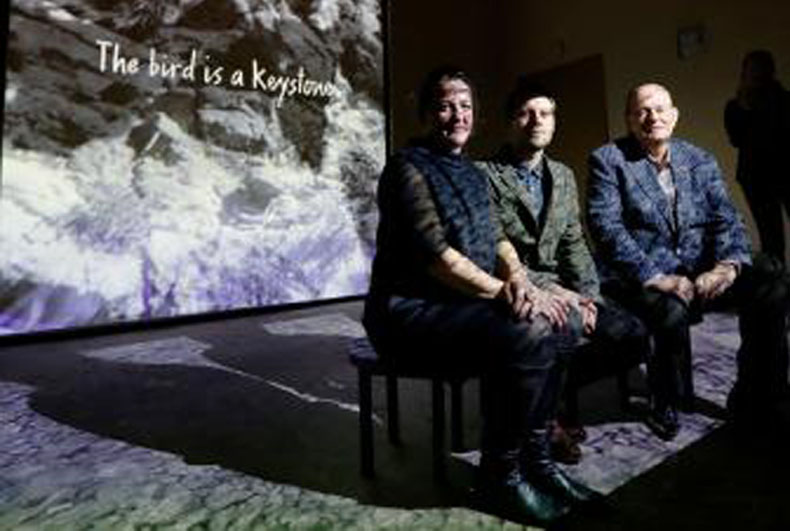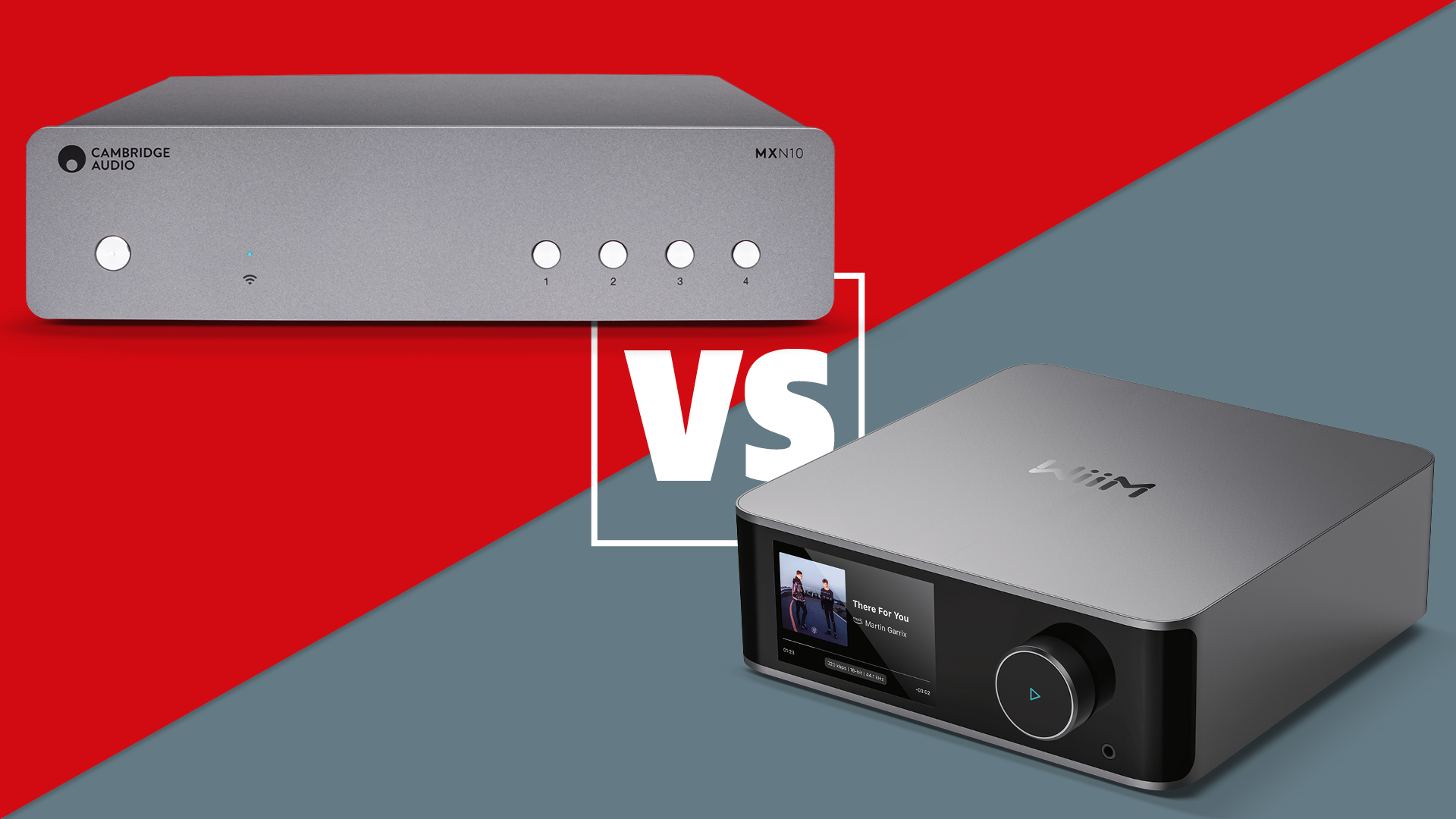Martyn Ware, surround sound pioneer and founder of The Human League and Heaven 17
There's been a quiet revolution over the last decade. When DVD came along (offering not just fine picture quality but full multichannel soundtracks), a brand new market sprung into existence: multichannel amps, 5.1 speaker packages, you name it. Surround sound had arrived.

The idea was anything but new. A small but select group of composers and sonic artists have been dreaming of surround sound ever since the 1950s, when composers like Pierre Boulez and Karlheinz Stockhausen created elaborate pieces of music that involved moving instrumental sounds around a room using electronic devices that compare to today's systems much like an abacus compares to the highest-spec laptop.
More recently, a growing number of musicians and artists have embraced surround sound, not just as an pleasant adjunct to the home cinema experience, but as a creative tool that might – they claim – transform the way we listen to music.
Prominent among these is Martyn Ware. Martyn achieved mainstream success in the 1980s as a founding member of electro-pop pioneers The Human League. After the first incarnation of the band split, Martyn founded Heaven 17. He then went on to successfully produce several hugely successful albums, including Introducing the Hardline According To... by Terence Trent D'arby.
Martyn Ware in his studio, where he works with a unique surround system
Nowadays, Martyn can fully indulge his passion for surround sound, which he does under the aegis of his company Illustrious, using an ingenious surround system of his own creation in his South London studio. Which is where I went to meet him.
Dominic Dawes: How did your fascination with 3D sound begin?
Martyn Ware: Even before we started The Human League, I was in another band called The Future. It was an experimental band, and we were very interested in making music that was more like a film soundtrack. So I was already interested in soundscaping, even back then.
DD: What were your inspirations?
MW: All of us in The Human League were interested in Brian Eno, as well as German bands like Can and Faust. We were also really into Giorgio Moroder and all that pop electronica stuff.
DD: I always thought of The Human League as primarily a pop group. Did I miss something?
MW: Well, we were a pop group. But in the early days, we were also doing things like The Dignity Of Labour (1979), which was more of an impressionistic, sequenced soundscape.
DD: Were you always thinking along those lines, even when you became commercially successful?
Get the What Hi-Fi? Newsletter
The latest hi-fi, home cinema and tech news, reviews, buying advice and deals, direct to your inbox.
MW: It was always with me, all the time I was producing pop records. Even on stuff like Let's Stay Together from Tina Turner's Private Dancer album, I was doing experimental stuff in the background. For the soundscape-ish quality at the start of the track, I created a 22-part chord and froze it to make this swelling effect.
DD: But what was the breakthrough, that got you into surround?
MW: I was interested in Pink Floyd's experiments. I'd come across some quadraphonic records, but I didn't have anything on play them back on. The turning point was my love of film, and my awareness of the various surround techniques that were evolving. Particularly, films with a very musical basis, like Koyaanisqatsi (The 1982 film featuring time-lapse cinematography of urban and natural landscapes, with music by Philip Glass recorded and mixed in surround).
Then, I went to a demonstration of surround at The Strongroom Studio in London, but it was all stuff like the The Eagles or Bob Dylan – in surround. I thought, when am I going to be on stage in the middle of the Eagles? But there were a couple of electronic pieces that caught my ear, which were using it in a creative way.
Martyn and assistant at work
In 1999, Martyn was approached by the National Centre For Popular Music in Sheffield. While asking him to be a consultant, they also mentioned they were building a new auditorium designed for three-dimensional surround sound. Martyn seized his chance.
MW: When I heard what we could do in there, I thought to myself: If you're talking about high fidelity, this is the ultimate in high fidelity.
DD: What happened next?
MW: We got off to a flying start. I formed this company, Illustrious, with Vince Clarke (formally of Depeche Mode, Yazoo and Erasure). We did some really interesting 3D compositions, but at first we had to render them in binaural, so people could listen to them on headphones. The first album we did like that was Pretentious, and we followed that with Spectrum Pursuit Vehicle (both on Mute records).
DD: What kind of set-up were you using? Was it anything like today's 5.1 packages?
MW: Not really. The software/hardware combination we were using allowed us to have up to sixteen different locations in the surround field. Of course, we could utilise any number of sounds, but there was a limit of sixteen places in the room where a speaker could be placed.
DD: And how did it evolve into what you have here in the studio today?
MW: Over time, we realised the kit we were using was becoming redundant. We decided it should be written as a piece of software that could be run on a Mac. That's what we have now - the software is called 3D Audioscape.
Watching Martyn and his assistant manipulate the system is quite an experience. They start the music running: deep and resonant sounds pour forth from combinations of the sixteen speakers mounted in a perfect circle around the room. The sounds in the piece move so convincingly across the soundfield that I can almost feel them pass me physically.
The way this is done is fascinating. The system is hooked up to a joystick, in the classic games controller style. Using this device, Martyn can pick individual sounds from the mix, and shift them to anywhere in the room, moving them in any direction and at any speed.
The joystick controller used to move sounds in three dimensions
This process is made intuitive by a graphic interface which represents the physical space. The various sounds in the piece are represented as brightly coloured lines, so that Martyn can see exactly where all the sounds are, and move them around at will.
The graphic interface of 3D Audioscape
DD: What have you learned from using this system?
MW: I've learned that I like music that bathes you in sound, that surrounds you. Concentric circles, spheres of sound, rather than just a modification of the left/right stereo experience.
DD: But how much use is there for this sort of thing?
MW: Lots, actually. We were asked by HSBC bank to do something. They asked us to create soundscapes, crossfading with each other, so if you sat in the branch in London, one minute you'd be listening to Honk Kong, then Paris, then New York. And you'd feel like you were in that space.
We also did the Mexico City Project, which was a huge outdoor thing, the biggest ever three-dimensional soundfield. It was 125 square metres by 30 metres high; 24 hours of solid content; all the artists responding to the sound of Mexico City. Amazing.
*****
If you love movies, and you've bought some kit in the last few years, it's quite likely you have some form of surround system in the form of a 5.1 package. Multichannel movie soundtracks are the norm, and while SACD and DVD-Audio didn't exactly set the world on fire, there are more music DVDs and Blu-rays appearing all the time. And of course, with the superb lossless audio formats available on Blu-ray discs, the future for surround looks rosier than ever.
If Martyn Ware gets his way, his particular brand of 'immersive music' will be finding its way onto your Blu-ray player in the not too distant future.
